Immerse yourself in the ancient tales of Zidon, a city of prophecy and miracles, where history and scripture intertwine.
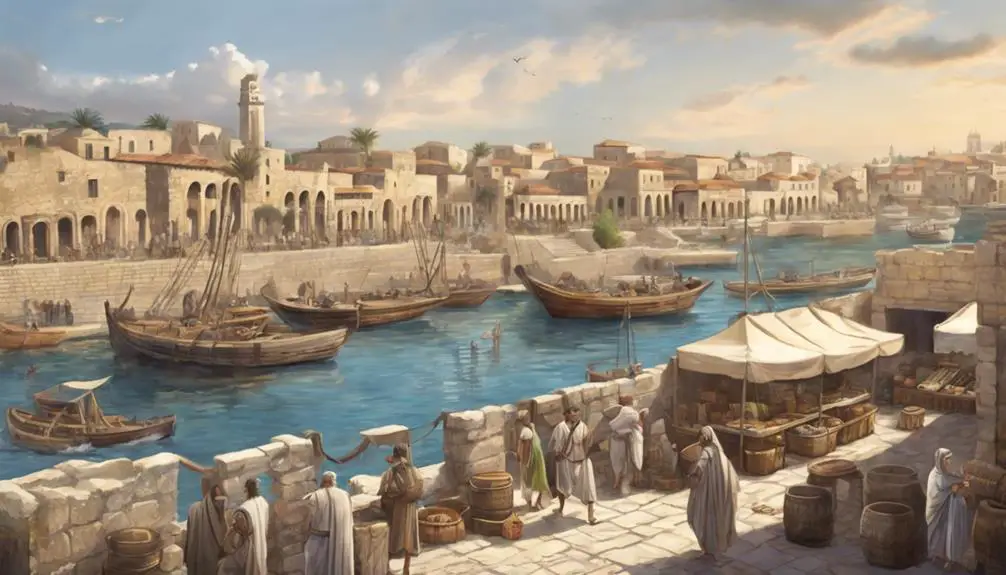
Zidon in the Bible
As a lighthouse guides ships through treacherous waters, Zidon's story in the Bible illuminates many facets of ancient Middle Eastern history and spiritual narratives.
You'll find this ancient city mentioned throughout the Old and New Testaments, serving as a backdrop for prophecies, miracles, and teachings.
Its significance is woven into the fabric of biblical history, from being a hub of Phoenician culture to its encounters with Jesus and the early church.
Unpacking Zidon's layers offers insights into its complex relationship with Israel and the overarching themes of judgment and redemption.
Let's embark on a journey to uncover the mysteries and lessons Zidon holds for us today.
Key Takeaways
- Zidon's economic and cultural significance is highlighted through its trade, craftsmanship, and strategic maritime location.
- Biblical narratives depict Zidon's complex relationship with Israel, marked by cultural influences, political interactions, and spiritual admonitions.
- Jesus' ministry near Zidon symbolizes a broader outreach, transcending cultural barriers and exemplifying universal acceptance and compassion.
- Prophecies against Zidon caution against pride and idolatry, underscoring moral lessons on humility, piety, and the consequences of moral decline.
Historical Background of Zidon
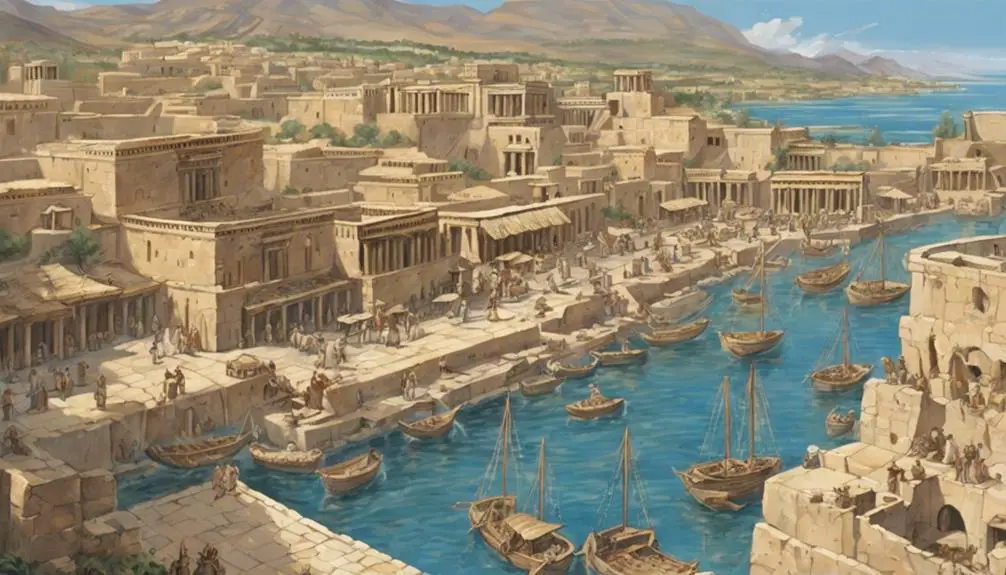
Zidon, often overshadowed by its neighboring city Tyre, played a pivotal role in the ancient Near East's maritime and trade networks. You'll find that Zidon's geography significantly contributed to its economic significance. Nestled on the coast of the Mediterranean Sea, Zidon boasted a natural harbor that facilitated trade and naval expeditions. This strategic location not only made it a hub for maritime trade routes connecting the eastern Mediterranean with the wider world but also allowed Zidon to exert influence over the hinterlands, accessing valuable resources.
The economic backbone of Zidon was its renowned craftsmanship in various industries, notably in purple dye production, glassmaking, and shipbuilding. The city's artisans were highly skilled, and their products, especially the Tyrian purple dye, extracted from the murex snail, were sought after across the ancient world, fetching high prices and contributing significantly to Zidon's wealth. Furthermore, Zidon's strategic position enabled it to act as an intermediary in trade between different civilizations, playing a crucial role in the exchange of goods, cultures, and ideas across the ancient Near East. This economic prowess underscored Zidon's importance in the region, despite the competition and comparisons with Tyre.
Zidon in Old Testament Narratives
Reflecting on its economic and geographical significance, it's crucial to explore how the Old Testament portrays Zidon, shedding light on its spiritual and cultural dimensions within biblical narratives. Zidon's geography and cultural influences play pivotal roles in these stories, showcasing its importance in ancient times.
- Zidon's Strategic Location: Nestled on the Mediterranean coast, Zidon's geography made it a vital trade hub. This is evident in the Old Testament, where its prosperity and accessibility to maritime routes are highlighted, illustrating its economic power and influence on surrounding regions.
- Cultural Influences and Idolatry: The Old Testament frequently references Zidon in the context of idol worship, particularly Baal and Ashtoreth. This underscores the city's significant cultural impact on Israel, often serving as a source of religious tension and moral testing for the Israelites.
- Political Alliances: Zidon's political maneuvers, including alliances and conflicts with neighboring nations and Israel, are detailed, showing its strategic importance in regional politics.
- Prophetic Pronouncements: Prophets in the Old Testament, such as Isaiah and Jeremiah, mention Zidon in their oracles. These references serve as warnings against Zidon's pride and idolatry, highlighting the spiritual lessons derived from its history.
Through these narratives, Zidon's multifaceted role in the Old Testament emerges, offering insights into its complex relationship with Israel and its enduring legacy in biblical history.
Jesus' Encounters Near Zidon
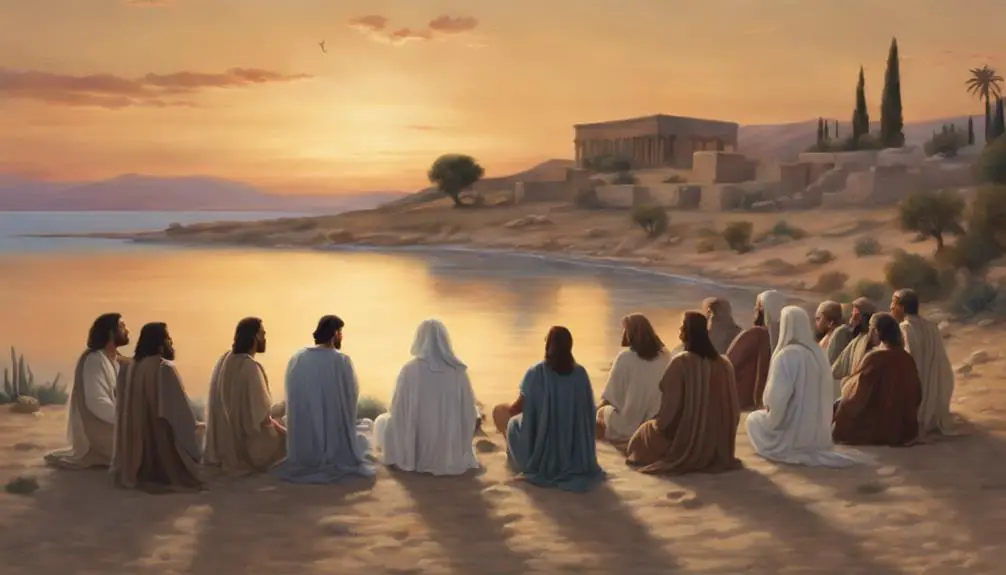
In the New Testament, Jesus' visit to the regions near Zidon signifies a pivotal moment, revealing the expansion of his ministry beyond traditional Jewish territories. This journey into areas influenced by Canaanite beliefs underscores Jesus' inclusive approach, challenging prevailing religious and social boundaries. By engaging with a population steeped in Canaanite traditions, Jesus' actions in these areas highlight a broader, more universal mission.
One of the most compelling narratives involving Jesus near Zidon involves healing miracles, which serve as a testament to his authority over illness and his willingness to cross cultural divides. These miracles not only affirm his power but also demonstrate a profound compassion for all individuals, regardless of their cultural or religious backgrounds. Through these acts, Jesus effectively dismantles barriers, inviting a reevaluation of existing prejudices and encouraging a more inclusive understanding of faith and community.
Analyzing these encounters, it's clear that Jesus' ministry near Zidon wasn't just about performing healing miracles. It was a deliberate move to engage with and challenge the predominant Canaanite beliefs, showcasing a message of universal love and acceptance. This approach not only enriched his ministry but also set a precedent for embracing diversity within the early Christian movement.
The Early Church and Zidon
The early Christian community's interaction with Zidon provides a crucial lens through which to view the expansion and adaptability of the early Church. Through examining Zidon's governance and maritime trade, you can see how the Church navigated and integrated into diverse cultures.
Here are four key points to consider:
- Zidon's Governance: The early Church faced a complex political landscape in Zidon. It wasn't just about spreading the gospel; it was also about understanding and navigating Zidon's governance structures. This required adaptability and strategic thinking from the early Christians.
- Maritime Trade: Zidon's position as a maritime hub played a pivotal role. The city's extensive trade networks facilitated the spread of Christian ideas and teachings across the Mediterranean. The Church's engagement with maritime traders shows its early recognition of the importance of commerce in disseminating faith.
- Cultural Integration: The early Church didn't just coexist with Zidon; it actively engaged with the local culture. This approach helped Christianity to take root in a predominantly pagan society, demonstrating the Church's flexibility and openness to cultural exchange.
- Religious Dialogue: Engagement with Zidon offered the early Church opportunities for interfaith dialogue. Through interactions with Zidon's diverse religious landscape, early Christians honed their theological arguments and broadened their understanding of faith in a multicultural context.
Prophecies and Judgments on Zidon
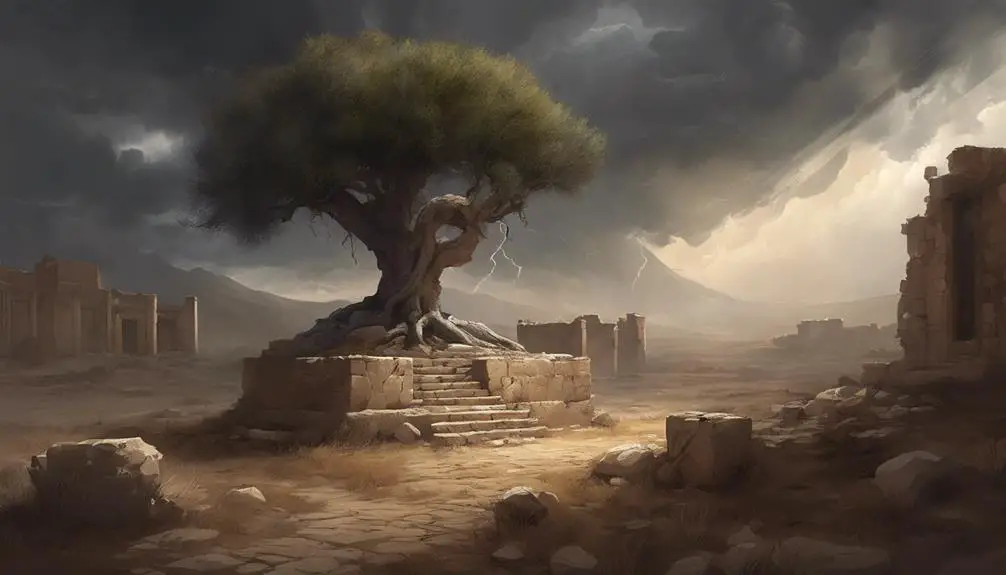
Exploring further into Zidon's biblical narrative, it's crucial to examine the prophecies and judgments levied against this ancient city, highlighting its spiritual and historical significance. The Bible doesn't shy away from detailing Zidon's fate, woven deeply with prophetic symbolism, indicating not just the physical, but also the moral and spiritual downfall of the city.
The prophets, particularly Isaiah and Ezekiel, articulate Zidon's judgments with precision. They depict Zidon as a city that's suffered due to its hubris and idolatry, a common theme for cities that strayed from God's teachings. Isaiah's prophecies emphasize the impending desolation, a direct consequence of Zidon's arrogance and departure from righteousness. Ezekiel, on the other hand, foretells a more nuanced judgment, one that intertwines Zidon's fate with the broader narrative of God's plan for His people and their neighbors.
This prophetic symbolism isn't merely historical recounting; it serves as a cautionary tale. It reflects the principle that societal and spiritual decay leads to downfall. Through Zidon's story, the Bible teaches the importance of humility, piety, and adherence to divine commandments, reinforcing the idea that the consequences of straying from these principles are severe and far-reaching.
Frequently Asked Questions
How Has Modern Archaeology Impacted Our Understanding of Zidon's Biblical History?
Modern archaeology has reshaped your grasp of Zidon's past, focusing on its geography and overcoming excavation challenges.
By analyzing artifacts and ruins, you've gained insights into the city's ancient layout and cultural practices.
Despite the hurdles, such as urban development and preservation issues, archaeologists have unearthed significant finds.
These discoveries not only enrich your understanding of Zidon's role in history but also provide a tangible connection to stories once thought confined to texts.
Are There Any Cultural or Religious Practices Unique to Zidon That Influenced Biblical Narratives?
You're diving into the distinctive domain of Zidon, where Phoenician gods and maritime rituals meld into a cultural canvas.
This ancient city's spiritual and seafaring practices indeed influenced its narratives. Worship of deities like Astarte and Baal, coupled with ceremonies at sea, showcases Zidon's unique contribution.
These elements not only colored their society but also left imprints on surrounding narratives, offering a rich tapestry of religious and cultural interplay.
How Did the Political Alliances of Zidon With Neighboring City-States and Empires Affect Its Depiction in the Bible?
You'll find that Zidon's political alliances with neighboring city-states and empires had a significant impact on its portrayal. Through Sidonian diplomacy and military alliances, Zidon navigated the complex political landscape of the ancient Near East.
These alliances not only bolstered its economic and military strength but also influenced how it's depicted in historical and religious texts. Analyzing these relationships offers a deeper understanding of Zidon's role and perception in ancient narratives.
What Are the Parallels Between Zidon's Economy in Ancient Times and Its Portrayal in Biblical Texts?
Why wouldn't Zidon's economy catch your eye? With its strategic trade routes and unmatched maritime prowess, it stood out in ancient times.
You'd find its economic success mirrored in biblical texts, highlighting its wealth and commercial significance. These writings don't just recount history; they delve into the nuances of Zidon's economic strategies, showcasing how its seafaring and trading capabilities set it apart.
It's a blend of history and analysis, revealing the city's economic strength.
How Have Interpretations of Zidon's Role in Biblical Stories Evolved With Contemporary Theological Scholarship?
Contemporary theological scholarship has shifted how you understand Zidon's role in biblical narratives.
You're now seeing its depiction not just as a historical account but as a canvas for prophetic symbolism and discussions on morality.
This evolution in interpretation highlights the nuanced ways scholars view Zidon's morality, offering deeper insights into its symbolic significance.
It's a reflection of broader trends in theology to reevaluate and find richer meanings in ancient texts.
Conclusion
In conclusion, Zidon's tapestry in the biblical narrative is both rich and complex, interwoven with threads of divine encounters, prophetic judgments, and early Christian influence.
Like a ship navigating the tumultuous waters of the ancient Mediterranean, Zidon's story is one of navigating divine favor and fury, contributing to the broader biblical seascape.
This analysis reveals Zidon not just as a historical footnote but as a vibrant testament to the interplay between divine providence and human history.

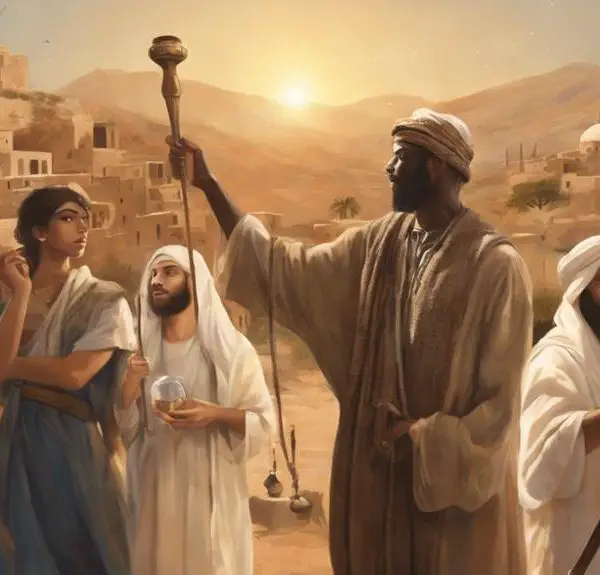

Sign up